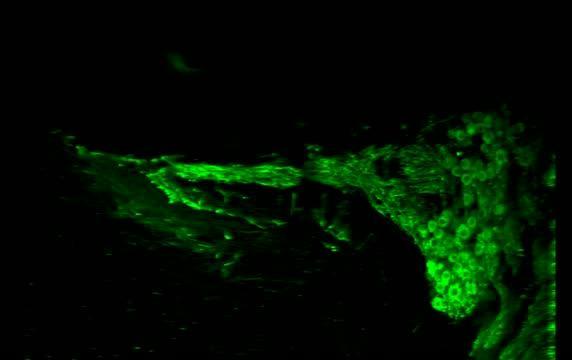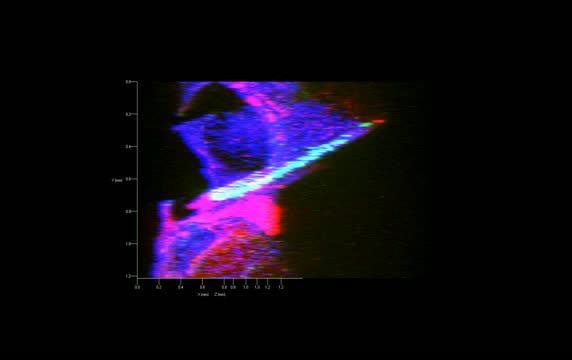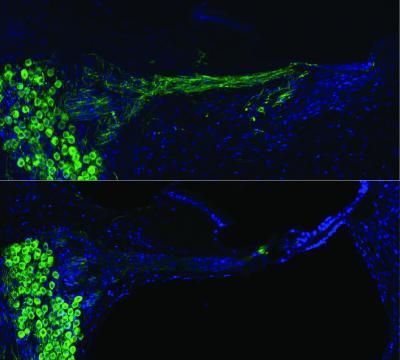While the neurotrophin production dropped away after a couple of months, Professor Housley says ultimately the changes in the hearing nerve may be maintained by the ongoing neural activity generated by the cochlear implant.
"We think it's possible that in the future this gene delivery would only add a few minutes to the implant procedure," says the paper's first author, Jeremy Pinyon, whose PhD is based on this work. "The surgeon who installs the device would inject the DNA solution into the cochlea and then fire electrical impulses to trigger the DNA transfer once the implant is inserted."
Integration of this technology into other 'bionic' devices such as electrode arrays used in deep brain stimulation (for the treatment of Parkinson's disease and depression, for example) could also afford opportunities for safe, directed gene therapy of complex neurological disorders.
"Our work has implications far beyond hearing disorders," says co-author Associate Professor Matthias Klugmann, from the UNSW Translational Neuroscience Facility research team. "Gene therapy has been suggested as a treatment concept even for devastating neurological conditions and our technology provides a novel platform for safe and efficient gene transfer into tissues as delicate as the brain."

This shows regenerated auditory nerves, after gene therapy.
(Photo Credit: UNSW Translational Neuroscience Facility)

This is the cochlea four days after gene delivery.
(Photo Credit: UNSW Translational Neuroscience Facility)

This shows regenerated auditory nerves after gene therapy (top) compared with no treatment (below).
(Photo Credit: UNSW Translational Neuroscience Facility)
Source: University of New South Wales